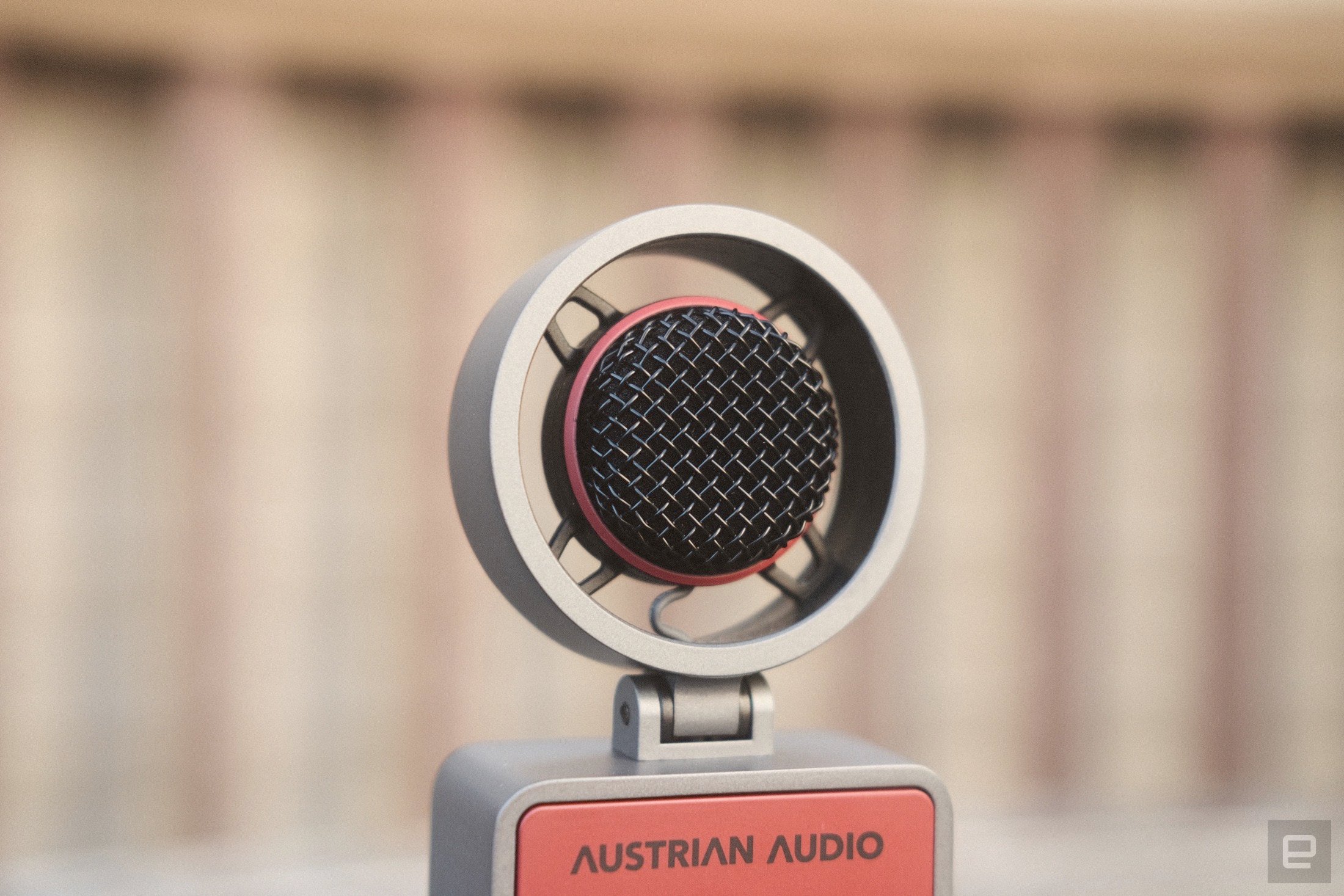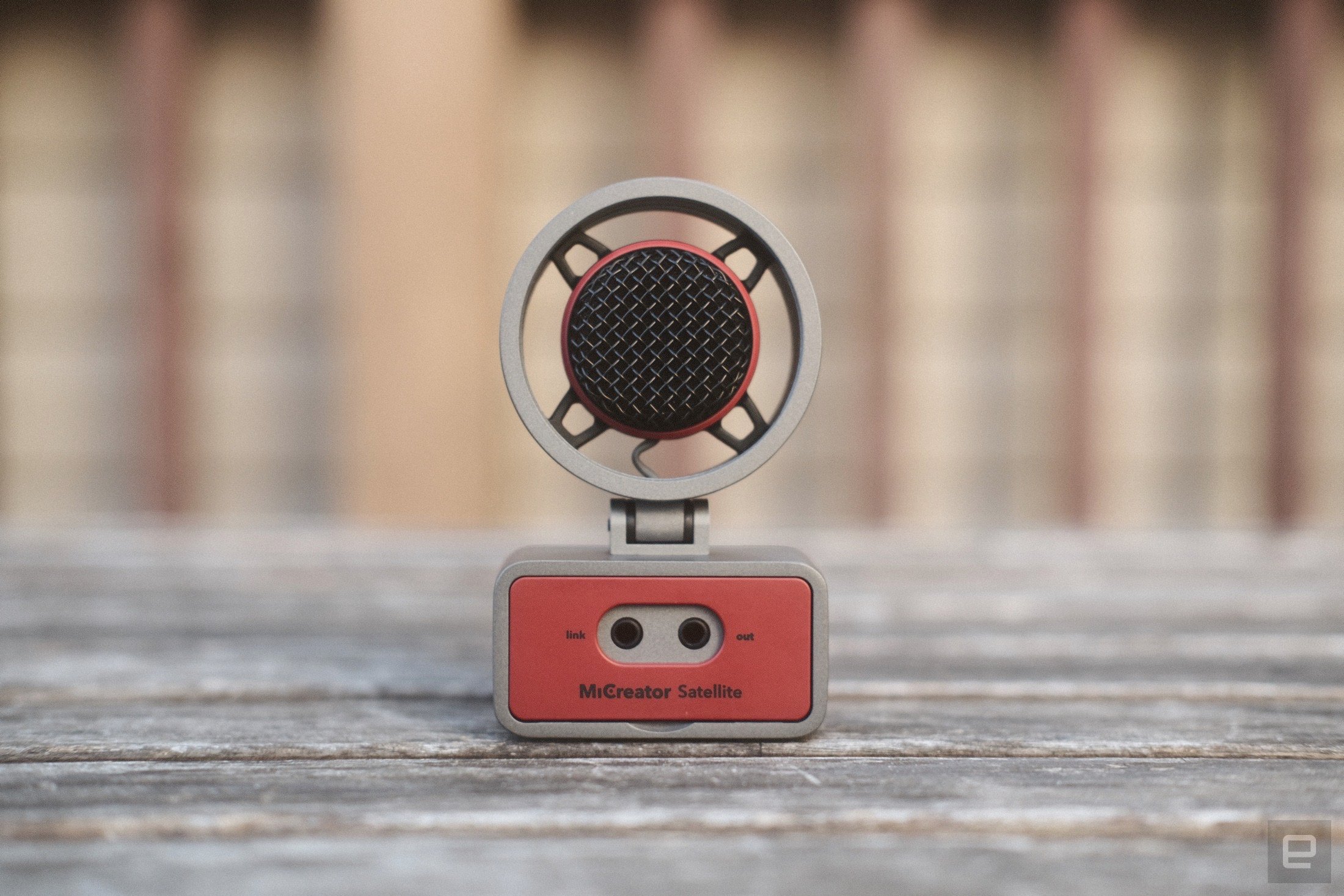Austrian Audio is not exactly a household name. It was formed in 2017 after the closure of AKG’s offices in Vienna. And it is mainly limited to high-end microphones and headphones. Now the company is dipping into more consumer-friendly territory with the $199 model. MiCreator Studioa combination of condenser microphone and USB-C audio interface in one incredibly portable package.
At 155 x 60 x 37mm, the MiCreator Studio is quite small, but I’d say it’s a little less than pocket-sized. It’s also surprisingly dense. 13 ounces isn’t exactly heavy, but it’s more than I expected the MiCreator to weigh just by looking at it. The weight makes it feel like a durable and well-made device. The only exception to this is the interchangeable faceplates. My review sample came with black and red plates, they look good but feel a little flimsy. And the magnets that hold them to the sides are a little weak and I could see them coming off easily if I threw them in the bag. At least it comes with a soft bag you can store it in so everything stays in one place even if it moves.
There are a pair of rubber feet on the bottom that allow the MiCreator to sit comfortably on almost any surface without worrying about being pushed around. And the microphone capsule is suspended by rubber shock absorbers, so vibration shouldn’t be much of a concern. If the tilt head doesn’t give you enough flexibility, there’s a screw mount underneath to attach it to a microphone stand.
The controls on the unit itself are relatively spartan. On the front there is a switch that changes the microphone from high gain to low gain or mutes it. And there’s a knob to control monitoring levels or the balance between two sources when you have something plugged into the 3.5mm input/output jack on the back. Below that dual-purpose jack is a dedicated 3.5mm headphone output and above it is a switch that allows you to set the input level of the additional input.
The switches to change the input level are probably my biggest complaint with the MiCreator. The difference between the high and low settings is quite large. Yes, you can obviously modify the levels in your DAW and most people will have no problem doing so. But I personally like to get my levels as close as possible without touching my DAW’s gain for maximum flexibility.

I also found that the high gain setting still required me to get quite close to the microphone while speaking, resulting in a lot of breathing and mouth noises. It’s probably exactly what you want when recording some ASMR videos, but it wasn’t ideal for podcasting. Again, a lot of this is easily fixed with a decent pop filter. But that’s something else to carry around and slightly undermines the portability factor.
Those small details aside, the microphone sounds great. They are highly directional, so even though they are fairly sensitive condenser microphones, background noise is rarely an issue. And they capture a good amount of mids and bass. This is essential for connecting a microphone to, say, a guitar amp, and tends to treat my lower vocal register well. But many will want to give their voice a lower tone in post-production.
That lack of gain adjustability becomes a problem again when you connect an instrument directly to the second input. Something like a synth with a master volume that doesn’t alter the pitch is fine. But going straight to my guitar was a little hit and miss. The most reliable way was to use my pedalboard and one of UA’s amp simulation pedals to have better control over volume and tone, rather than relying on amp plugins in a DAW. However, Austrian Audio gets a lot of credit for including an instrument cable in the box, although it’s standard 1/4-inch TS on one side and 3.5mm TRRS on the other side for connecting to the MiCreator. It may seem like a small thing, but it saves you from having to search and order a rather unusual cable on your own.

The company also sent one of its MiCreator satellites. This is a second microphone, without an interface, designed to pair with MiCreator. It costs $99 but adds a lot of flexibility. For one, it’s the exact same microphone as the MiCreator, so you can use them as a stereo pair or for two people in a simplified podcast setup. But the included cable is also long enough that you can place one mic against one amp while capturing room tone with the other. Or, you can mic an acoustic guitar with one and sing with the other. And the satellite is really tiny. This is one of the smallest full podcast studios you can get, if not the smallest.
If there’s one feature I would have loved to see, it’s an independent mode of operation. If the MiCreator had a small battery and a microSD card slot so it could function as a field recorder or capture an interview when connecting your laptop or iPad isn’t really feasible, I could see it taking up a permanent spot in my day bag. .
Still, for $199, or $299 when bundled with a satellite, the MiCreator offers a surprising amount of value. Frankly, it’s better than it’s entitled to at that price. It’s a great condenser USB microphone and a solid (if simple) audio interface in a small, sturdy package. It can be a high-quality podcast studio to take anywhere. Or being the main way a band records new material while on tour.
This article originally appeared on Engadget at https://www.engadget.com/micreator-studio-hands-on-a-199-portable-recording-studio-worth-more-than-its-price-tag-180021292.html ?src=rss






